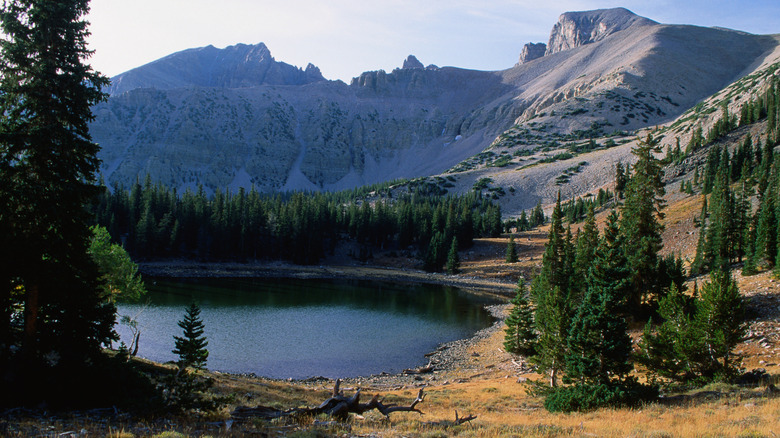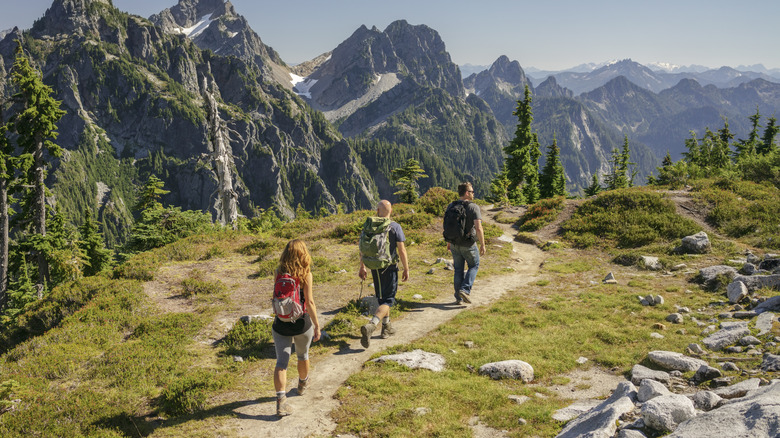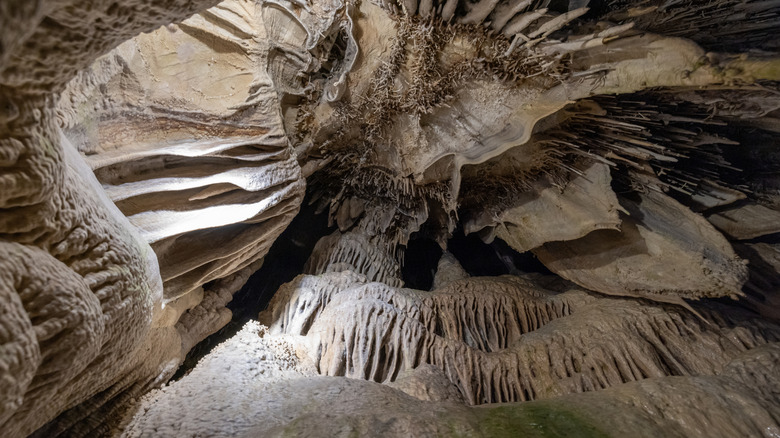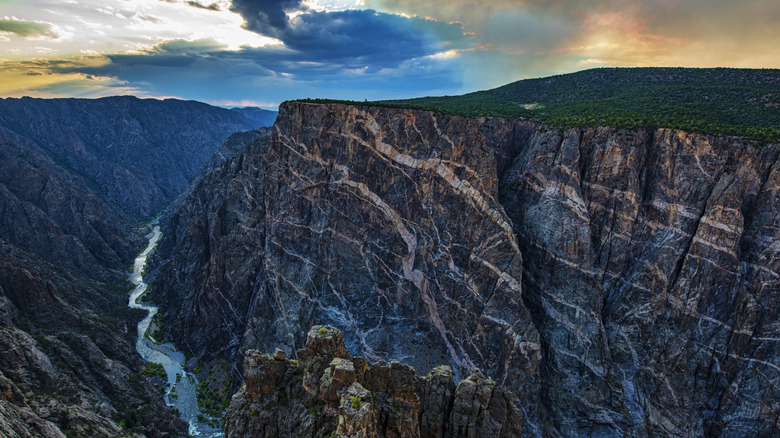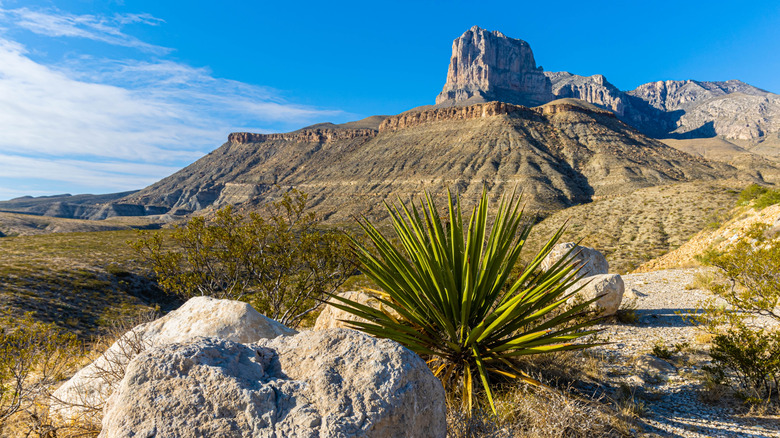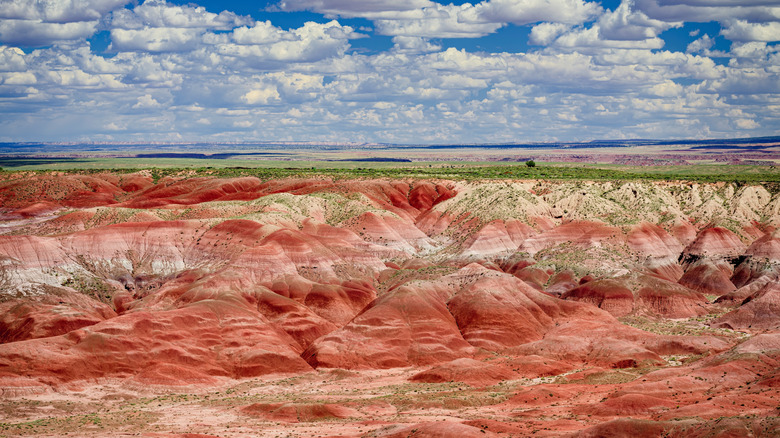The 5 Most Underrated National Parks Out West
Every travel enthusiast should plan a trip to the American West at least once in their lifetime. Full of wide-open spaces, rugged beauty, and endless opportunities for outdoor recreation, the entire region sets the perfect scene for an unforgettable vacation. One of the best ways to experience the western United States is to visit the national parks.
The country is home to 63 national parks, and some of the most famous include must-visit destinations to add to your West Coast bucket list like Zion, the Grand Canyon, Yellowstone, and Yosemite, which attract millions of tourists from around the world each year. While beautiful, the popular parks can often be overcrowded, making it difficult to enjoy the natural beauty in solitude. If you're the type of traveler who enjoys venturing off the beaten path and discovering hidden treasures, you should consider visiting one of the west's underrated parks instead. From the mountains of the Pacific Northwest to the deserts of Arizona, there are plenty of incredible underrated gems awaiting your discovery out west.
North Cascades National Park
North Cascades National Park is located in the Pacific Northwest in Washington. Despite being only a few hours from the bustling city of Seattle, it only received a little more than 40,000 visitors in 2023 making it an ideal choice for travelers in search of some peace and quiet away from big crowds. In comparison, Olympic National Park, which is also located in Washington, received over 3 million. North Cascades isn't just Washington's least visited national park — it's one of the least visited in the entire country and a true hidden gem.
If you've ever dreamed of exploring pristine glacial lakes, or hiking on miles of mountain trails without seeing another soul, North Cascades National Park is the perfect place to plan a trip. According to the National Park Service, the North Cascades, " rank as some of the country's wildest, most rugged, and beautiful mountains outside of Alaska." They've been dubbed the "American Alps" and are home to more than 300 glaciers. Established in 1968, the preserve is made up of 684,000 acres. In addition to glaciers, you'll be able to enjoy breathtaking views of subalpine meadows and thick forests, where countless species of flora and fauna thrive in the wilderness including gray wolves, wolverines, bald eagles, and falcons.
Sadly, the glaciers in North Cascades National Park are disappearing. Make sure you visit this underrated national park before its stunning natural features are lost to climate change.
Great Basin National Park
Most tourists visiting Nevada head straight to the bright lights and nightlife of Las Vegas, but the western state is also home to some incredibly beautiful natural scenery and some of the top-ranked destinations for rock climbing in the United States. Great Basin National Park is located in the eastern part of the state, near the border with Utah. It comprises 77,100 acres and was established in 1986.
Visitors can explore diverse landscapes including rugged mountains, desert valleys, old-growth forests, and cave systems. Wheeler Peak is the highest summit in the park and reaches an impressive 13,063 feet in elevation. The strenuous 8.6-mile climb to the summit takes between four and 10 hours and should be enjoyed by experienced and well-prepared mountain climbers. With miles and miles of hiking trails, there are plenty of other options for hikers of all skill levels.
During your visit, book a guided tour with a park ranger that allows you to journey underground into the Lehman Caves, which is the longest cave system in Nevada. After the sunsets, enjoy unspoiled views of the starlit sky. Since the region has one of the lowest population densities in the continental United States, there is little light pollution. Great Basins National Park was designated as Dark Sky Park in 2016. This national park is also home to some of the oldest living organisms on Earth. The Great Basin bristlecone pine trees that grow along the edges of the forest can live more than 4,000 years! The park only receives about 140,000 visitors each year so there's plenty of space to carve out a little slice of nature that you'll have all to yourself during your visit.
Black Canyon of the Gunnison National Park
Colorado is an outdoor recreation lover's dream come true. It's home to gorgeous mountain landscapes, wild rivers perfect for whitewater rafting, and plenty of epic ski towns enjoyed by winter sports enthusiasts from around the world. There are four national parks within Colorado, the least visited of which is Black Canyon of the Gunnison National Park.
Most tourists opt for the iconic Rocky Mountain National Park, which is gorgeous but crowded during peak season with around 4.5 million visitors each year. Black Canyon of the Gunnison National Park is just as breathtaking, but only receives around 300,000 visitors annually.
Instead of fighting for space on the trails in more popular parks, head straight to this underrated gem in western Colorado. Established in 1999, it covers more than 30,700 acres and has more than 30 different hiking trails with options for all experience levels. Those who make the trip will be rewarded with views from epic cliff faces that tower 1,800 feet above the Gunnison River. Fishing and camping are other popular activities within the national park, and views of the night sky can't be beat. Black Canyon of the Gunnison National Park was established as an International Dark Sky Park in 2015, so it's one of the best places to camp under the stars.
Guadalupe Mountains National Park
You'll hardly believe you're in the Lone Star State on a visit to Guadalupe Mountains National Park. It's located in western Texas about four hours from the Mexican border and just to the South of New Mexico's state line. Established in 1972, it encompasses 86,416 acres of canyons, mountains, dunes, and desert. The state's highest natural point, Guadalupe Peak, is located within the park and towers 8,751 feet above sea level. The next three highest peaks in Texas can also be found in this national park. Fans of natural history will love exploring the massive Permian fossil reef, which formed more than 260 million years ago.
Guadalupe Mountains National Park is one of the biggest stretches of wilderness in Texas with miles and miles of hiking trails to explore. There are options for everyone – from leisurely strolls through the desert to heart pumping climbs that take you to the "Top of Texas."
The park's remote location means it takes some effort to get there. The nearest gas station is 40 miles away, so coming prepared is essential. In 2021, Guadalupe Mountains National Park received the most visits it's ever had — just 243,000 people. Those who make the trip are rewarded with plenty of wide open spaces to explore and gorgeous unspoiled views.
Petrified Forest National Park
The southwestern state of Arizona is home to the kind of landscapes that probably come to mind when you envision the American West. Rugged deserts, towering cacti, and epic mountains are just a few of the many attractions. There are three national parks located in Arizona, including one of the most popular in the country. Grand Canyon National Park receives well over 4 million visitors each year, making it the second most visited national park in the country. Saguaro National Park, where you'll find views of the largest cacti in America, welcomes about a million travelers yearly. While both are well-worth visiting, Petrified Forest National Park is the place to go if you're looking for somewhere uncrowded and underrated.
Although it plays third fiddle to the other national parks in Arizona and receives only 645,000 visitors each year, Petrified Forest is full of natural beauty and things to do. It covers 221,390 acres, 50,000 of which are designated National Wilderness. The desert landscape is made up of semi-arid steppe and grasslands home to unique flora and fauna. You might spot critters like elk, bobcats, jackrabbits, porcupines, and prairie dogs. Birds of prey like the golden eagle, the red-tailed hawk, and the burrowing owl thrive. Cacti, sagebrush, grasses, and wildflowers create an oasis for pollinators like butterflies and bees.
There are multiple archaeological sites with evidence of human inhabitants dating back 13,000 years including Puerco Pueblo, which was home to the ancestral Puebloan people from 1200 to 1400. The park is named after the petrified wood found in the area, which formed when trees were transported and buried by an ancient river. Crystals and minerals grew in the cracks over millions of years creating the colorful fossilized wood that visitors enjoy today.
